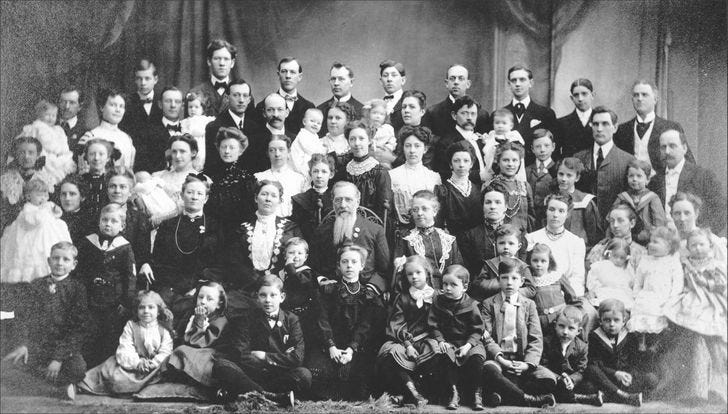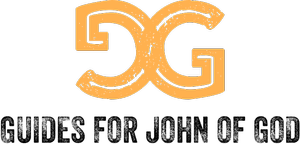The subject of a woman giving birth to 69 children is a controversial one that stirs up conversation and often disbelief among many. This claim traces its roots to the 18th century, tied to a Russian peasant woman named Valentina Vassilyeva. As the story goes, Vassilyeva holds the world record for the most children birthed by a single woman. Throughout 27 pregnancies, it is said she gave birth to 16 twins, 7 sets of triplets, and 4 sets of quadruplets between 1725 and 1765. While some historical records seem to substantiate this claim, many modern-day experts find it hard to accept. The main concern lies in the medical feasibility of the claim.
The human body, while remarkably adaptable, has its limits. The logistics of carrying, birthing, and raising such a large number of children, even in the best of circumstances, are staggering. Over the period of 40 years, this would mean that Vassilyeva was pregnant for an estimated 37 of those years. This in itself is a monumental physical feat, let alone the strain of multiple births each time. The potential health risks associated with multiple pregnancies and births would also be considerable.
Skeptics also point to the lack of concrete historical data to back up the claim. The primary source of this story comes from the Guinness World Records, which cites a monk’s notes as their reference. However, these notes have been questioned for their authenticity and accuracy. Critics argue that the note could have been a mere exaggeration, a common practice in the olden days to make the ordinary seem extraordinary. Others question the lack of corroborating evidence, such as birth or baptism records, which were common practice in 18th century Russia.
On the other hand, believers argue that the lack of evidence doesn’t necessarily discredit the claim. They point to the potential for lost or destroyed records over the centuries. Additionally, they highlight the fact that multiple births were more common in earlier times, due to a lack of birth control and the necessity of large families for work and survival. They also note that genetic predisposition can play a significant role in multiple births, suggesting that Vassilyeva could have had a genetic anomaly that predisposed her to hyper-ovulate, increasing her chances of multiple births.
In conclusion, the claim that one woman gave birth to 69 children is indeed controversial and continues to be a topic of debate among historians, medical professionals, and the curious public. While some view it as a testament to the extraordinary capabilities of the human body, others see it as a tall tale from the annals of history. Regardless of the truth, the story of Valentina Vassilyeva continues to intrigue and spark conversations, making it a fascinating piece of human history.

Examining the Allegation
Examining the allegation involves a meticulous process of scrutinizing the claim made against an individual or an entity. This procedure necessitates an unbiased perspective, along with a dedication to uncovering the truth. The first stage often entails gathering all relevant information and evidence pertaining to the accusation. This can include collecting statements from witnesses, examining documents, and even utilizing expert analysis when required.
Once the evidence is amassed, it is then evaluated in a comprehensive manner. This involves cross-referencing information, checking the validity of the sources, and establishing the credibility of the witnesses. It’s crucial to remember that the examination of an accusation should not be influenced by personal feelings, prejudice, or assumptions. Instead, it should be based entirely on factual data and the strength of the evidence.
Subsequent to the evaluation phase, comes the interpretation stage. Here, the collected data is analyzed in context with the allegation. The aim is to see if the evidence substantiates the claim or refutes it. The evidence does not always have to directly support or contradict the allegation, as it could also provide an alternative explanation or scenario.
In the final stage, conclusions are drawn based on the evaluation and interpretation of the evidence. This is a critical step, as it determines whether the allegation holds merit or not. It’s essential to remember that the conclusion must be justifiable and supported by the evidence collected during the examination process.
The process of examining an allegation is a meticulous task that requires accuracy, objectivity, and a clear understanding of the circumstances surrounding the claim. It is a vital part of ensuring fairness and justice, as it helps distinguish truth from falsehood, thereby maintaining the integrity of any system or organization.
Historical Context
Historical context refers to the cultural, economic, and social conditions that influenced the creation and reception of a particular work, event, or idea at a specific time in history. It is an integral part of understanding and interpreting various aspects of history because it provides a framework within which we can more accurately view and analyze past events, decisions, or actions.
For instance, to fully comprehend a literary work, one must consider the era during which it was written and the prevalent societal norms and attitudes. This includes examining the author’s background, the political climate, and the technological advancements of the time, among other things. Similarly, when studying historical events, the context in which they occurred is crucial for a comprehensive understanding. The economic conditions, cultural beliefs, and social structures that existed during that period can significantly influence the causes and effects of these events.
Historical context, therefore, is not just a backdrop against which history unfolds, but an active player that shapes and is shaped by historical events and ideas. It helps us see the interconnectedness of past and present, and underscores the complexity and multi-dimensionality of history. By offering a broader perspective, historical context allows us to avoid anachronistic interpretations and misrepresentations, and promotes a more nuanced, empathetic, and critical understanding of the past. It teaches us that history is not a mere collection of isolated facts, but a complex web of interrelated elements that influence and are influenced by each other.

Fact-Checking the Claim
Fact-checking the claim is an integral part of the process in verifying the authenticity of any given statement. The process involves a rigorous evaluation of the merits of the assertion in question, scrutinizing it against available evidence to ascertain its validity. In a world increasingly saturated with vast amounts of information, misinformation, and disinformation, the need for fact-checking has never been more paramount. Fact-checking aims to separate the chaff of untruths from the grain of facts, thereby preserving the integrity of information.
It’s critical to understand that not all claims are factual, and not all factual claims are accurate. Hence, the need for a fact-checking mechanism that can effectively sift through these claims and provide a verdict on their veracity. Fact-checking is not just about contesting those declarations that seem blatantly false, but it is also about testing those that may appear credible on the surface. Often, a statement that seems plausible may be built on shaky premises or lack sufficient evidence for its support. Fact-checking helps to expose these inconsistencies and ensure that statements are backed up by reliable and robust evidence.
The process of fact-check good claim involves multiple steps. Initial analysis of the statement, evaluating the source for credibility, cross-verification from multiple sources, and finally, a conclusion based on the evidence gathered. It’s like a detective piecing together clues to solve a mystery. The outcome can have significant implications, especially when the claims being fact-checked have the potential to influence public opinion or policy decisions.
Fact-checking is an indispensable tool in our arsenal to combat the widespread dissemination of falsehoods that can distort our understanding of reality. It promotes accountability and transparency, encouraging individuals and institutions to be more careful with their assertions. It’s a vital process that upholds the integrity of information, ensuring that the truth triumphs over falsehood. Fact-checking is more than just a process; it’s a commitment to truth and accuracy, a bulwark against the tide of misinformation that threatens to sweep over our information landscape.
The Impact of the Story
The impact of a story can be profound and far-reaching, affecting not just the individual reader but also the broader spectrum of societal norms, values, and perspectives. Stories have the power to instigate change, to challenge established notions, and to ignite conversations that might otherwise remain unspoken. They can influence the way we think, the way we feel, and the way we perceive the world around us.
A well-told narrative has the ability to transport us to different times and places, allowing us to understand and empathize with characters whose experiences and circumstances are different from our own. It can also provide a sense of solace and understanding, showing us that we are not alone in our struggles, our dreams, or our aspirations.
Moreover, stories can serve as a mirror, reflecting societal issues and encouraging us to question and reevaluate our own beliefs and attitudes. They can expose us to diverse cultures and experiences, fostering a sense of tolerance, empathy, and understanding towards those who are different from us.
On a broader scale, the power of storytelling can lead to significant changes in societal attitudes and behaviors. It can bring about awareness and understanding of important issues, leading to increased advocacy and action. Stories can also play a crucial role in education, not just in terms of imparting knowledge, but also in fostering critical thinking and creativity.
In conclusion, the impact of a story is not to be underestimated. Whether it be a novel, a film, a play, or even a simple anecdote, the power of storytelling is evident in its ability to influence, inspire, educate, and bring about change. It is a testament to the enduring power of the written and spoken word, and its potential to shape not just individual minds, but society as a whole.

Verification and Evidence
Verification and evidence are two fundamental elements in ascertaining the truth in various situations. Verification involves the process of establishing the truth, accuracy, or validity of something, usually through an investigative procedure or a comparison with recognized standards. On the other hand, evidence refers to the data or information that supports or refutes a claim, theory, or proposition. Both verification and evidence are crucial in various fields, including science, history, journalism, and more.
In the scientific field, for instance, researchers heavily rely on verification and evidence to validate their hypotheses. They conduct numerous tests and experiments to gather data, which then serves as evidence to either confirm or rebut their theories. Without the rigorous process of verification and the substantial evidence, their findings may lack credibility and thus, be dismissed by the scientific community.
Similarly, in historical research, historians use evidence such as artifacts, documents, and eyewitness accounts to verify the accuracy of historical events. The process of verification helps ensure that the historical narratives we accept and teach are not based on hearsay or speculation, but on reliable evidence.
In journalism, reporters use verification and evidence to ensure the accuracy and truthfulness of their stories. They gather evidence through interviews, documents, and on-the-ground reporting, then verify the information by cross-checking it with multiple sources. This practice not only ensures the accuracy of the news they deliver but also maintains their credibility and the public’s trust.
In conclusion, verification and evidence are key in establishing the truth. They serve as the backbone of any investigation or research, providing a solid foundation for any claim or proposition. Without them, we would be left in a world of uncertainty, where facts would be indistinguishable from fiction. They enable us to ascertain the truth, make informed decisions, and ultimately, progress as a society.
